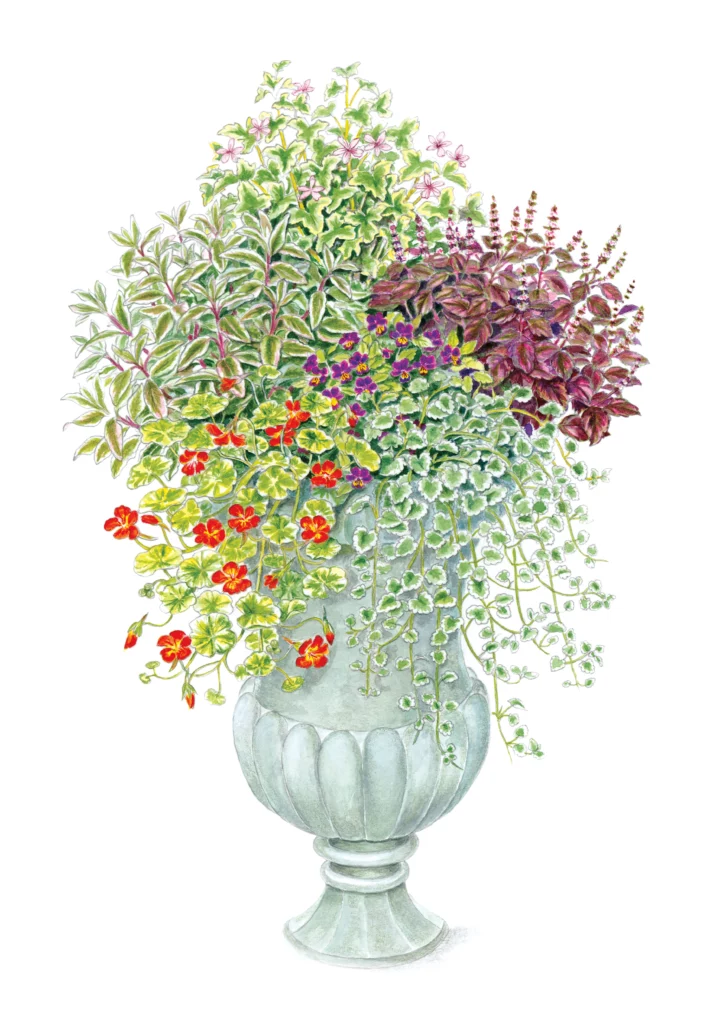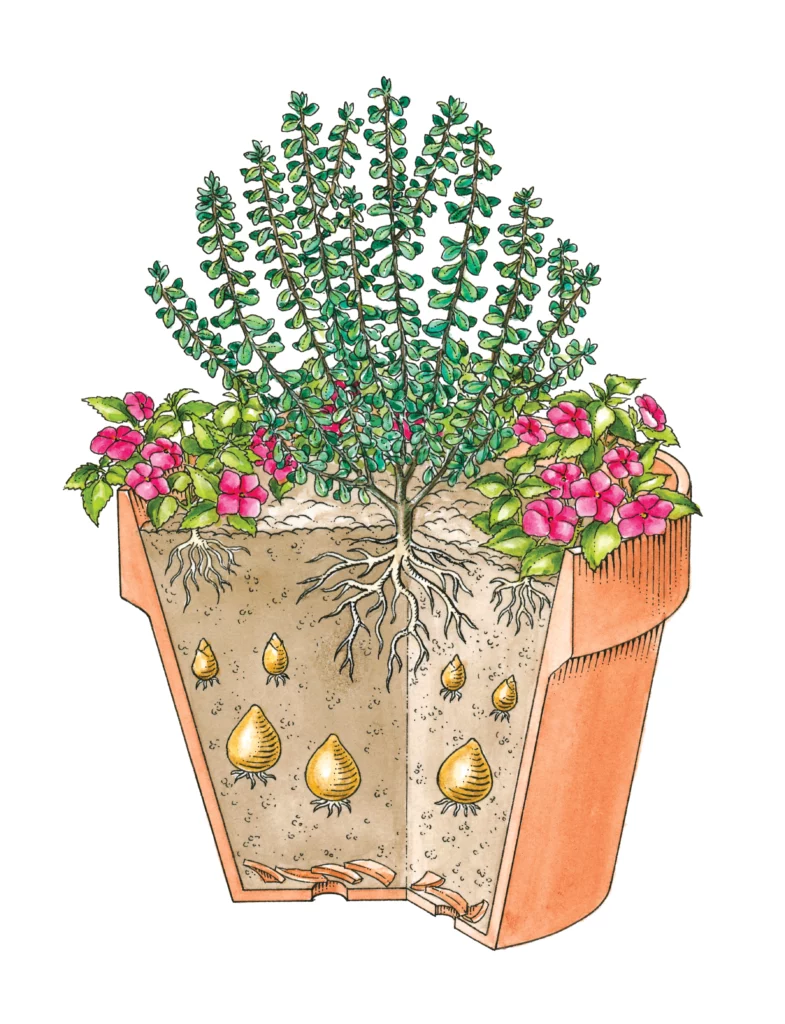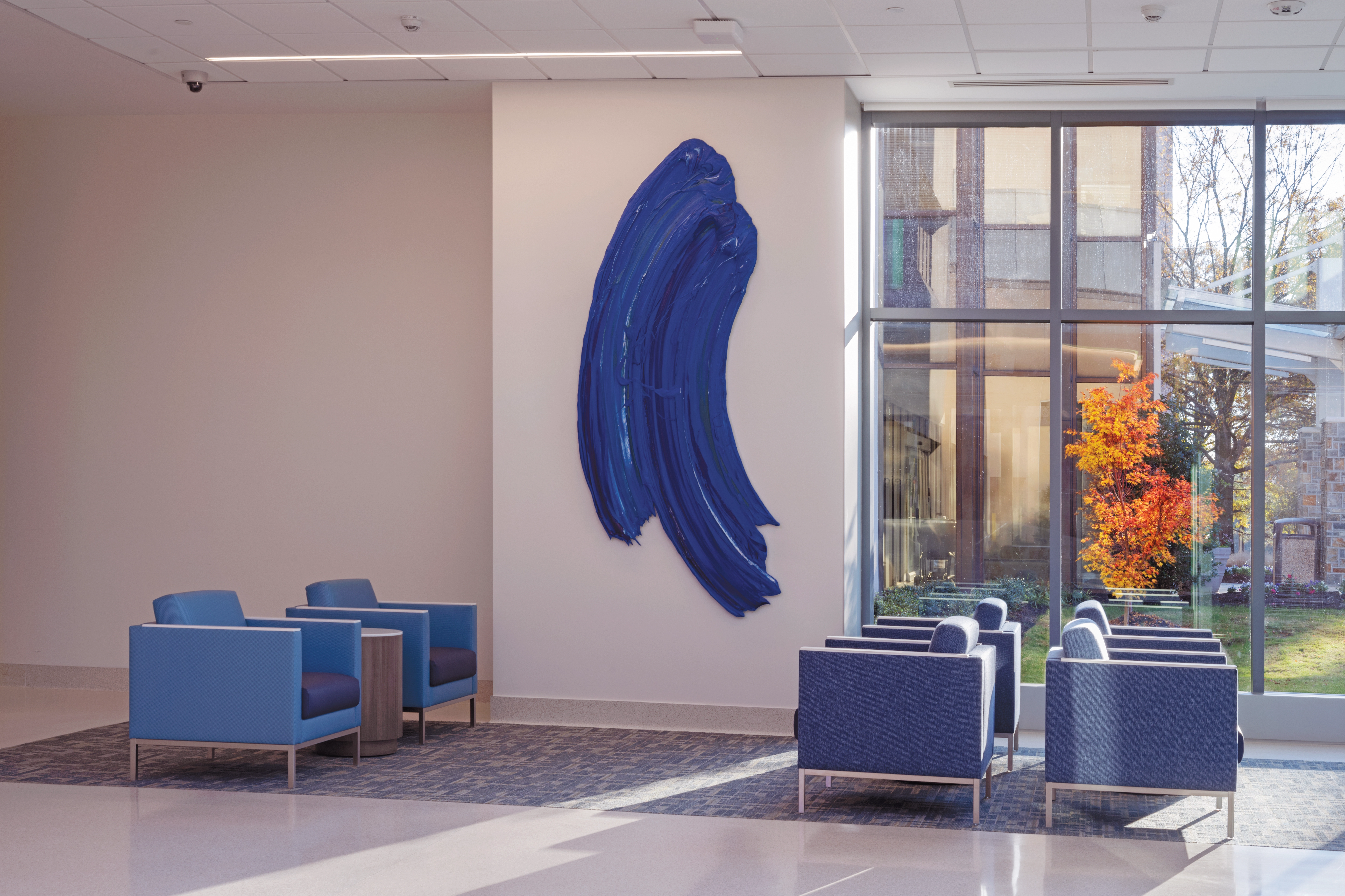Article:
Container Gardening
Tips for growing fruitful plants
BY JANICE LEWINE | ILLUSTRATIONS BY DORLING KINDERSLEY/GETTY IMAGES
Container gardening is an attractive alternative to gardening in the ground because it saves money, time and space. A potted garden also makes a stunning and useful addition to any landscape. Ready to dig in? Consider these tips from Jody Keye, co‑manager of greenhouse retail sales at Fairview Greenhouses & Garden Center in Raleigh.
1. Decide where you want the container placed, then determine how much light it will receive in that location and how much energy you want to spend taking care of it.
2. Select a container color, size and style that will be pleasing to your eye, and one that is the right size for the space and type of plants you will be growing (seasonal, herb/vegetable, tropical or evergreen). Any container will work if it can hold plants and provide good drainage. Use a coffee filter to cover the drain hole in your containers, which allows the water to drain while keeping the soil in.
3. Keep plants and containers in proportion. The total height of the fully grown plants should be no more than two times the height of the container.
4. Once you’ve decided on a color palette and design for your container, choose plants that like the same light, water and growth habits. Shade plants like two hours or less of direct sun, while sun plants will need four or more hours of direct sun. Morning sun offers the best light in the long summer months, and the hot western sun will require more watering.
5. Always use potting soil. Soil taken directly from your yard might introduce weeds and insects. When placing the soil in your container, keep it loose. Roots need oxygen to stay healthy, and loose soil helps with drainage. Be sure not to overcrowd the containers so plants have room to grow. For extra-large containers, use crushed water bottles with the lids on to reduce the amount of soil needed and to help with drainage.
6. Try the “Thriller, Filler, Spiller” technique. Thriller is the main pop of color in the pot, spiller is a plant that will drape over the edge of the pot, and filler is the plant that fills in between. When adding plants to the pot, be sure to consider where the container will be placed. If you are able to see all the way around the container, the thriller will be placed in the center of the container, with the filler and spiller planted around it. If one side of the container is out of sight, the thriller can be planted towards the back with the filler and spiller placed in front.
7. Vegetable and herb containers can be pretty and delicious. Most vegetables need bright sunlight. Most containers have only one plant (such as tomato or pepper squash) in them, but you can plant a combo container of veggies. Just remember not to overcrowd the pot. Using a container of at least 5 gallons, you can plant a tomato plant (thriller) with cucumber (spiller) and lettuce (filler), and add marigolds for a splash of color. In the same container, you can add carrot or beet seeds to sprout and fill the pot.
8. Daytime watering is best. Water the soil, not the plants, and continue until water exits the drain holes.
9. Use deer- and rabbit-resistant plants, such as caladiums, angelonia and coleus.
10. Know your plants and save their tags. Deadheading (removing faded blooms) and trimming the plants is an important and relaxing activity.
Learn more about Raleigh by exploring all of our articles at midtownmag.com.






